So we’ve been hit by a link farm. And yes, even digital marketing service companies and agencies are not immune. As long as it’s a website we’re talking about, regardless of the business or industry, a negative SEO attack such as getting hit by a link farm is a real threat.
In this article, we’re going to show you:
- What getting hit by a link farm looks like.
- How it impacts organic traffic.
- How to troubleshoot and identify link farms and PBNs.
- What steps to take to rectify.
- And a little bit of good news! ….perhaps Google’s AI is really getting smarter and more advanced and we’ll show you why we think that.
#1 – What getting hit by a link farm looks like.
We first noticed some traffic drop, but it wasn’t an outright dent on the graph. It could’ve easily been due to decreasing search volume, as more people are focused on the election news, the economy and Covid-19 updates. And it was December, so very likely people were busy with the holidays.
However, when we checked in our Google Search Console, we saw that there was indeed a drop in rankings in December 2020.

Naturally, we were curious and started digging into our own website SEO data. Using the Ahrefs tool, we found groups of domains from the same IP class linking back to our website. If you have this tool, you can also easily look this up the same way as the screenshot below here.
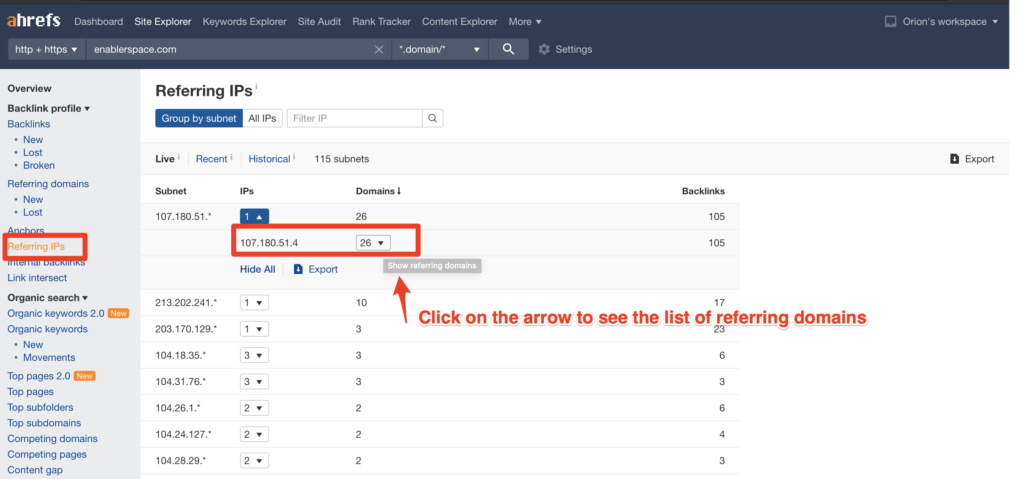
Once you click on the arrow, you’ll see a list of websites that are linking to your domain, which are hosted on the same Subnet as such.
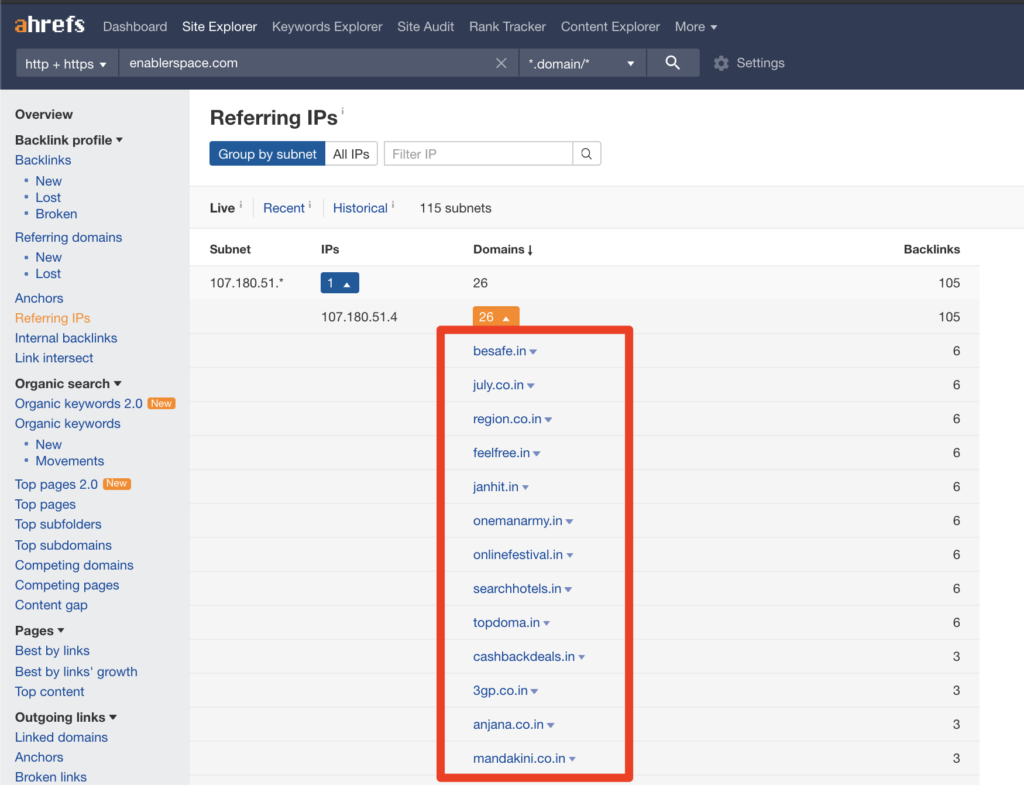
And if these do not look like spam websites, we do not know what does. 😂 … Of course, if you’re not sure, visit some of the websites to spot check and take a look at the content, whether it looks legit or are essentially spam.
#2 – How it impacts organic traffic and why you should never engage in blackhat SEO, link farms or PBNs private blog networks.
As you can see from Google Analytics, we saw organic traffic drop in December. You may follow the screenshot to navigate to this report to see your website’s organic traffic.
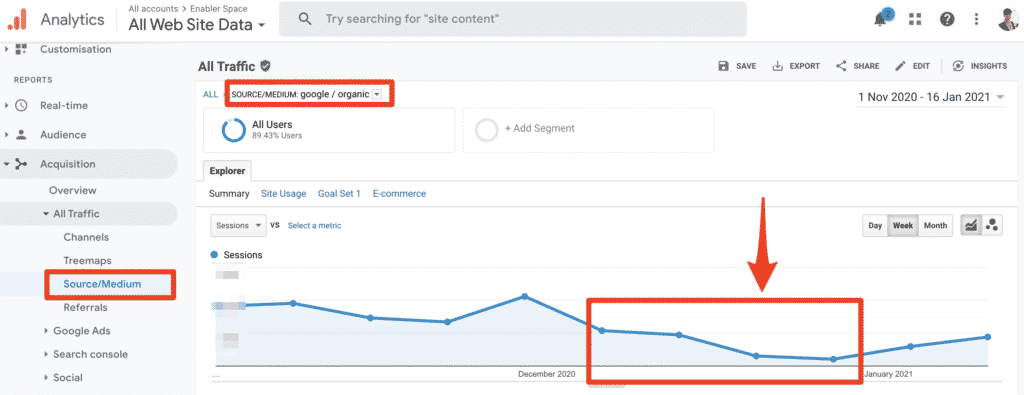
As for how does a link farm or PBN looks like. Well, someone somewhere have decided to send us a handful of spammy links, which would potentially damage our SEO score and rankings, as you can see.
#3 – How to troubleshoot and identify link farms and PBNs.
However, at a glance, it would seem unbalanced that a few 20+ websites could deal such a blow. This is where it gets interesting. Every domain has a certain SEO power, score, juice, you can call it what you prefer. But the idea is, the juice is derived from that certain website’s backlink profile itself.
Now just to keep it simple for the sake of explanation here, we’re going to use the terms ‘good website’ and ‘bad website’.
Imagine website A.com has 20 ‘bad websites’ linking to it called website 1.com to 20.com. And apparently, 1.com has another 20 ‘bad websites’ linking to it, and the chain goes on. If website A.com is to link to your website, you’re not simply getting just 1 backlink, you’re getting hit by a huge bomb of negative link juice from a gang of ‘bad websites’.
Let’s try to explain that with some visual here.

#4 – What steps to take to rectify.
To remove these links from your website’s referring domain profile and fix your SEO score, you’re going to need to ‘disavow’ these links.
And to go about that, you can see Google’s guideline and disavow file template here: https://support.google.com/webmasters/answer/2648487#file_format
So what we’ve done, is set up the disavow .txt file as you can see below.

And submitted it to Google via Search Console as seen in the screenshot here. https://search.google.com/search-console/disavow-links
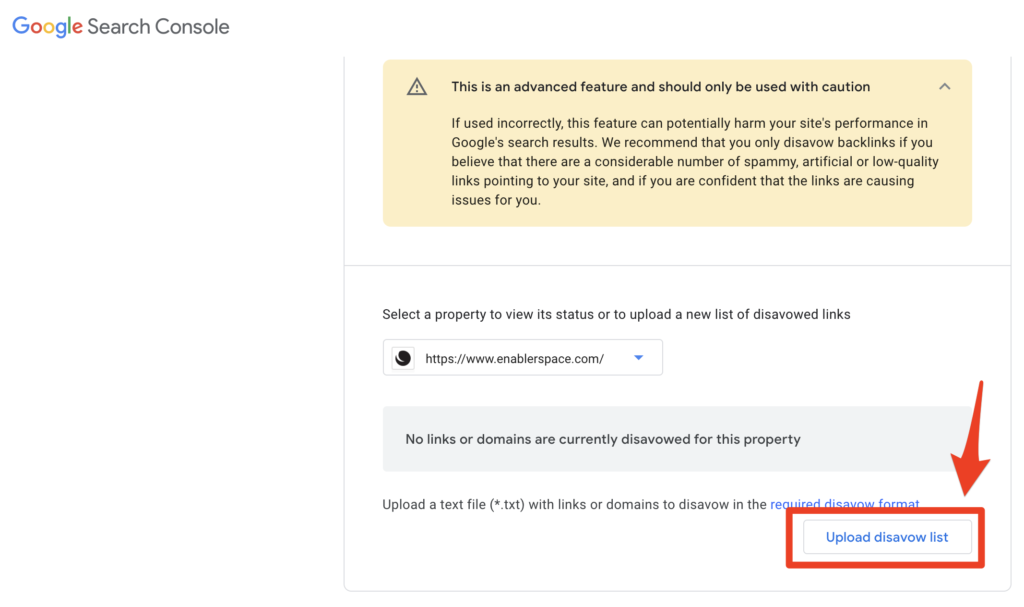
If you ever get to do this yourself, don’t forget to see the verification message after uploading your disavow list.
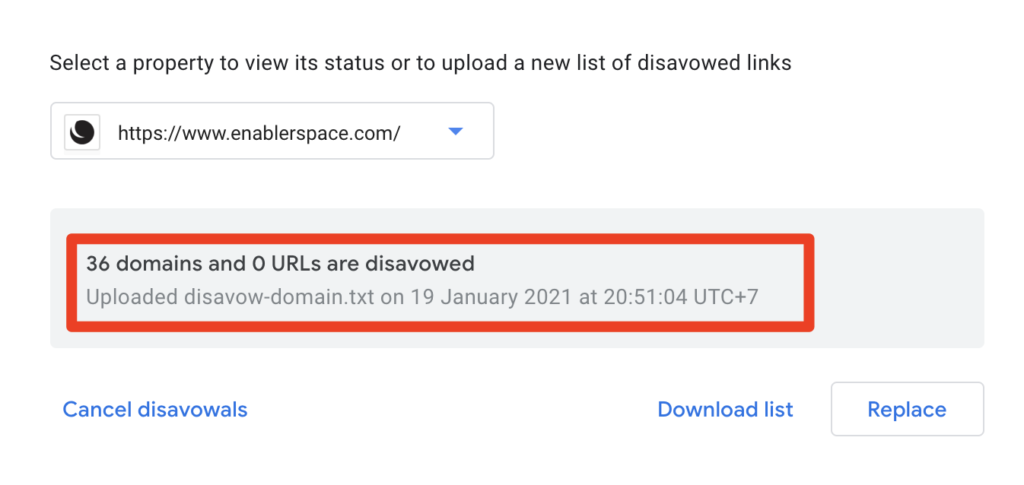
Once we’ve done all that, now we wait and monitor our website’s performance.
#5 – And a little bit of good news!
Apparently, we noticed ranking and organic traffic improvements before we had even submitted the disavow list.
Via spot checking on Ahref, we did see some of the spam links were ‘lost’, while some were still actively there. Our best guess here is that Google’s AI and machine learning has most likely advanced to the point of understanding webmaster’s intent, whether they truly are enagaged in black hat SEO, or it was more likely a negative SEO attack.
Through what means? Again our best guess here would be correlations, about the website and webmaster’s behaviour, whether it’s content, past SEO efforts made on the website and so and and so forth matches with the current activities.
Any way, there you have it. Just about any website can get hit by link farms and negative SEO attacks. And if you see traffic drop, we hope this case study and guideline for first level troubleshooting may come in handy.

